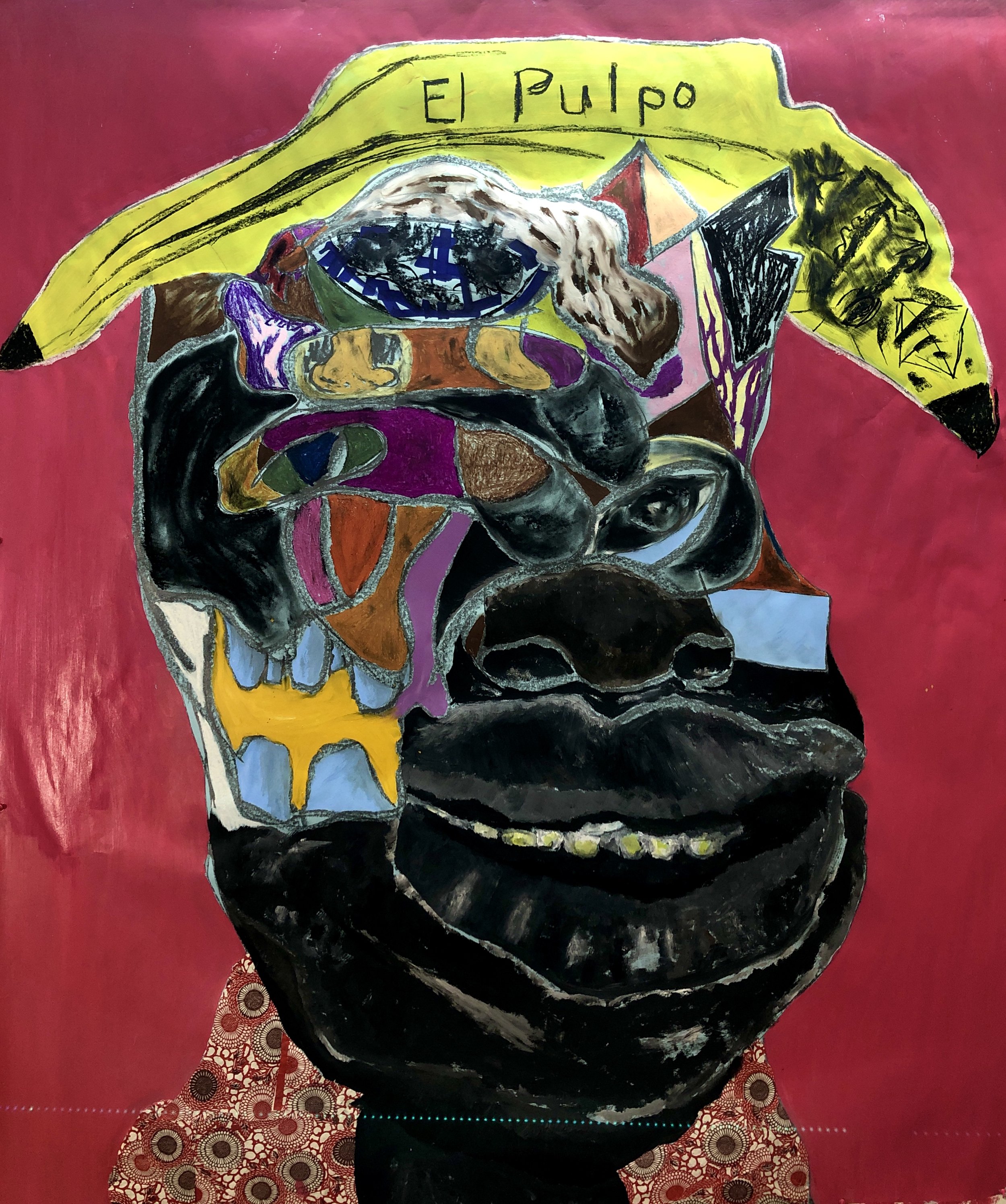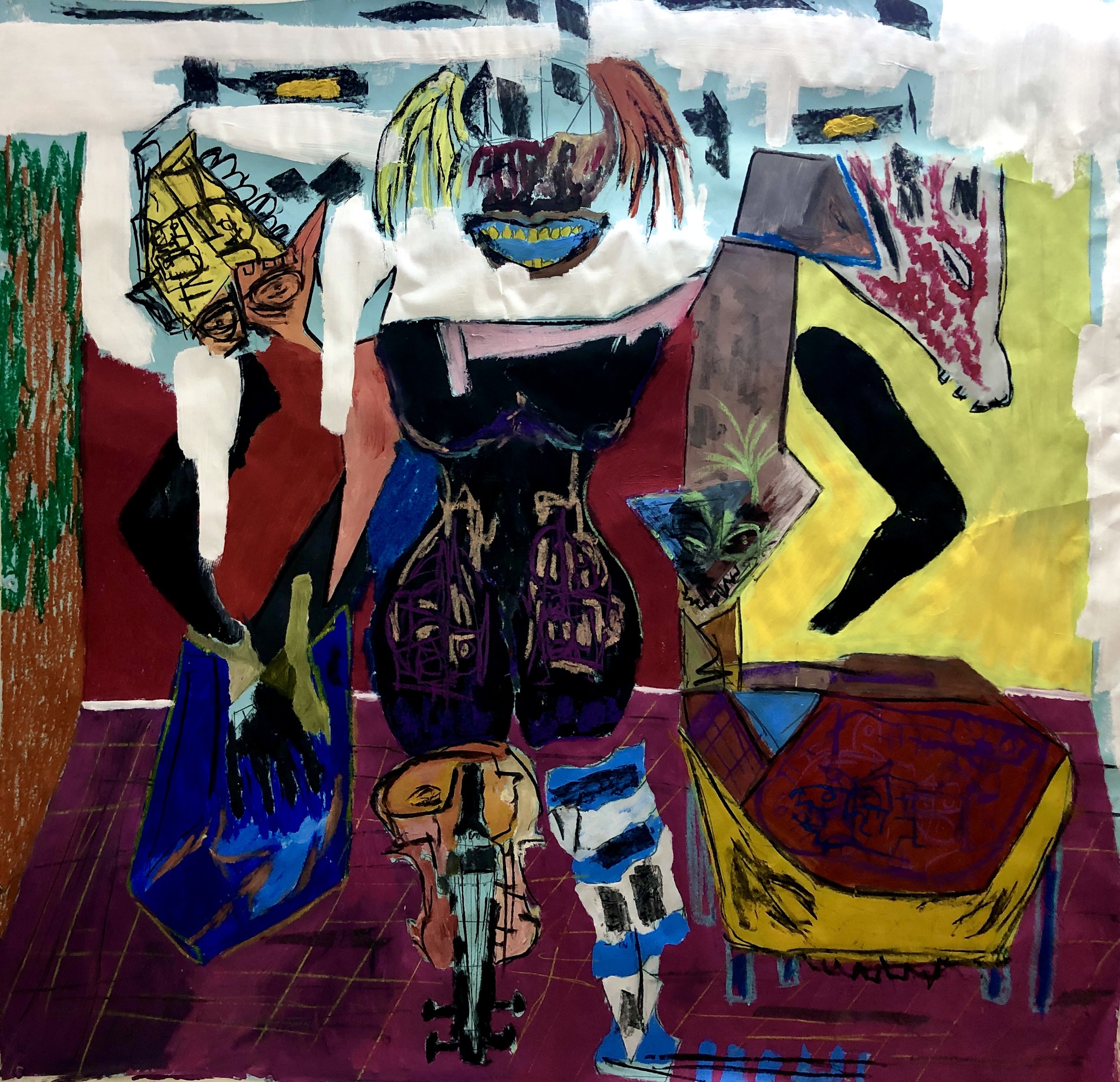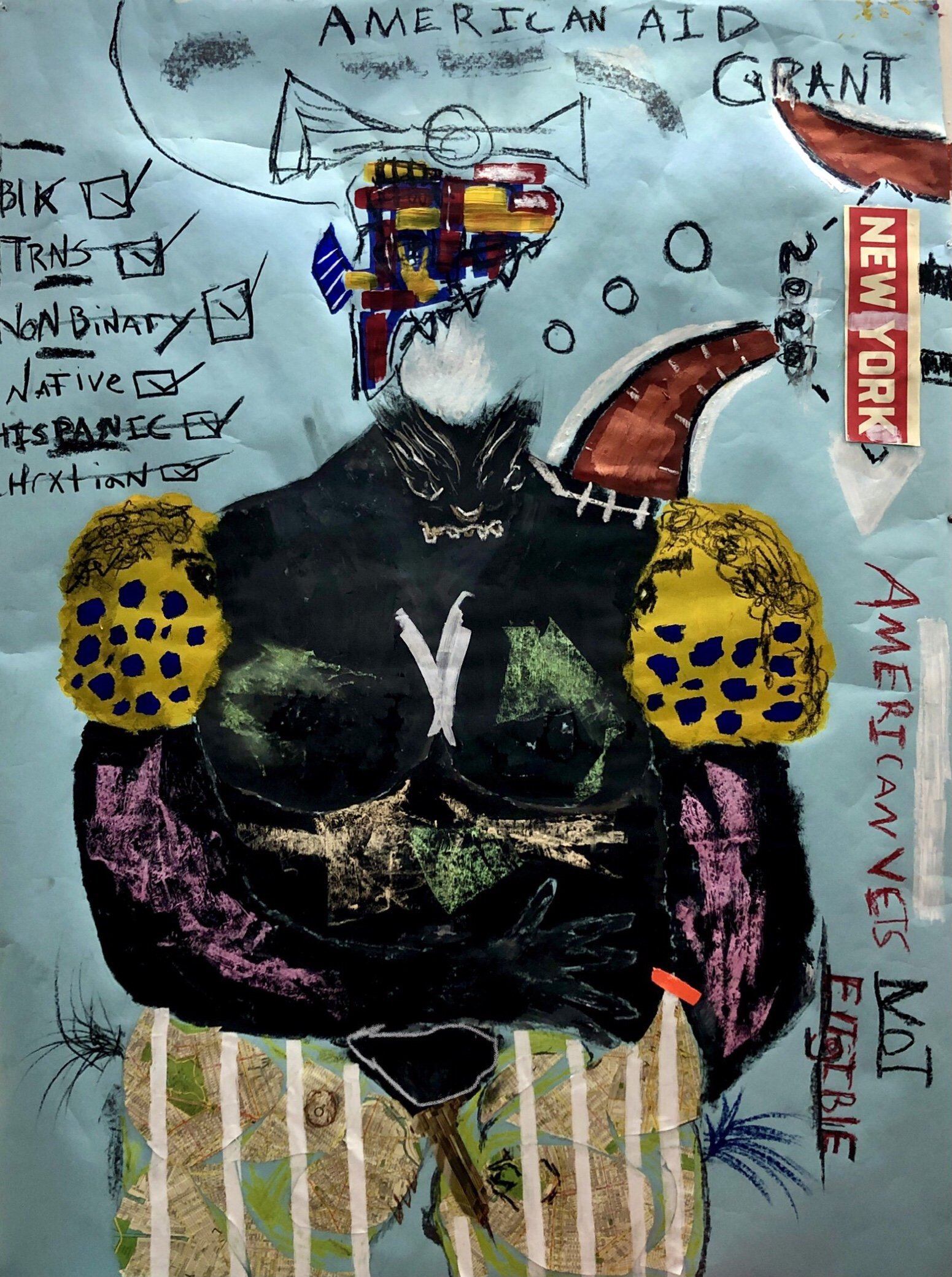
Eat the fruit,
speak with God :
JJ Pinckney
➤ I felt an immediate kinship, the first time I saw JJ Pinckney’s work. The multidisciplinary artist’s multilayered paintings were familiar. They were full to the brim with vibrant color, magical realism and the pulp of his Gullah Geechee heritage. ———
—— It was a spiritual experience like listening to the rhythmic meanderings of George Clinton on To Pimp a Butterfly or Isaiah Rashad scatting on a lo-fi beat. His work brings to mind the Twi term “Sankofa” which means “go back and get it”, Sankofa signifies the eternal resurgence of Africanisms in Black culture from a micro to macro level. In cultural critic Greg Tate’s seminal essay Cult-Nats Meet Freaky-Deke, he points out the rise of a new ideology among Black artists, “These are artists for whom black consciousness and artistic freedom are not mutually exclusive but complementary, for whom “black culture” signifies a multicultural tradition of expressive practices.”
JJ and I came from the same stew, a mix of cultural appendages, Indigenous spiritualities and mutant customs weaned from our ancestors in West Africa. I was excited to kick it with him and reason about the work as well as the man behind the canvas.
Raised in Ohio, JJ showed no artistic interest as a child. He preferred to play sports, making a career in collegiate football with the Cincinnati Bearcats. JJ began painting four years ago after a chance visit from his former teammate Mark Wilson Jr. Mark had taken up painting and brought his materials with him to New York. It was love at first sight. JJ began an artistic practice shortly after to emulate this feeling, his first contact of brush to canvas.
In his collection Eat the fruit, speak with God, JJ deals with themes of spirit, imperialism, diaspora and political education. In his piece Praise dancing for the cold and lonely, the artist takes on the syncretic nature of Black American spirituality. The figure he depicts is humanoid but consists of an otherworldly patchwork of textures from bat wings to a wooden cello.
In another painting, water for air JJ takes aim at the singularity of Blackness. In the left corner, JJ writes shorthand for Black, transgender, Non-binary, Indigenous, Hispanic and Haitian. He invokes Black identity as a categorization and relation which simultaneously subsumes and undermines all other identity groups. The figure in the painting has no ascertainable features aside from its blackness.
In his piece A light in the attic, JJ pays homage to Shel Silverstein’s cover art for his famous book of poems A Light in the Attic. He paints a message of worker solidarity and depicts the struggle of Mexican migrant workers against big corporations signified here by the “HDG BEZOS” text.
In American Tentacles, JJ paints a morbid portrait of American imperialism particularly in its extraction of natural resources from Latin America. The smiling Black figure is segmented and latched on to by the parasitic tendrils of the United States, here represented by a banana titled “El Pulpo” which means the octopus in Spanish.
“He is a shaman operating within the magic of Hoodoo.”
African burial grounds brings light to the history of New York City building over the final resting places of enslaved African folks. It points out the machinery of Blackness, in that the United States only deems us only useful as beasts of burden and labor leading to the desecration of ancestral burial grounds. The pink, purple and black color palette dominates the painting in contrast to the red and white of the bottom third of the painting, spelling out a message of destruction and the encroachment of space. For shooting in the wrong basket, JJ renders a figure wearing a mascot head. He takes aim at the White establishment’s distortion of Dr. King’s message for their own devices.
JJ is here to disrupt the White art world and create space and visibility for folks within his community. He creates work in service of the future generation in the hopes that they’ll catch the vibration and revolt. The great Toni Cade Bambara held that “as a culture worker who belongs to an oppressed people my job is to make revolution irresistible.” JJ is a historian bringing light to erased moments of resistance within the African diaspora. He is a shaman operating within the magic of Hoodoo. He is a revolutionary, inscribing symbolic manifestos with his art. JJ is a curator creating a safe haven for Black artists. Most importantly, JJ Pinckney’s work renders revolution irresistible and delectable with every paint stroke.




